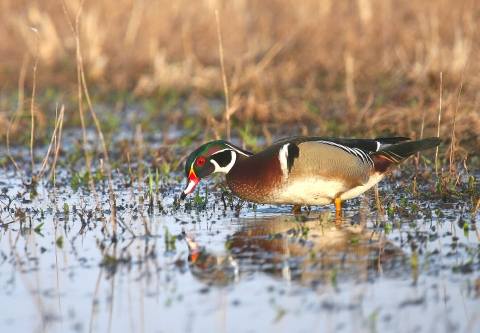What We Do
Forest Management
Timber harvest for forest management is currently conducted Complex wide in accordance with an approved Forest Management Plan that is designed to meet wildlife habitat objectives. The plan emphasizes activities that protect, restore, and manage the functions and values of the forest to support viable populations of native flora and fauna, consistent with sound biological principles. Priority is given to management activities for federal trust species such as migratory birds. Forest management prescriptions include timber stand improvement, commercial timber harvest, and reforestation. Habitat manipulations would be conducted primarily through commercial timber harvests of surplus forest products. The sale and disposition of forest products would comply with open market rules and formal bid solicitations.
Individual forest stands are inventoried, timber harvest prescriptions developed, and timber harvest operations carried out in a manner that will accomplish the forest habitat management objectives for migratory birds, threatened or endangered species, and resident wildlife. Timber marking operations will select trees that would be harvested by commercial timber and pulpwood operators. Trees may also be removed through timber stand improvement operations or by permittees when commercial sales are not feasible.
Forest management operations are directed at providing more vertical diversity throughout the overstory, midstory, understory, and ground flora. Favoring trees of varying ages and sizes, including some of the largest dominants within each forest block, will promote the habitat requirements of forest-dwelling birds and other resident wildlife. Forest conditions following timber harvest are more beneficial to wildlife as harvest operations can help restore the functions and values typically associated with bottomland hardwood forests historically occurring throughout the region.
Moist-soil Management
Moist-soil units are managed for waterfowl, shorebirds, and other water-loving birds. These areas can be flooded during the winter months when the bulk of migrating waterfowl use the refuge and then drained during the warmer months for management. A variety of natural plants produce seeds that are preferred waterfowl foods. Invertebrates such as crayfish, dragonfly larvae, and beetles, also flourish in these wet environments and are important sources of protein for birds. By using different management techniques, biologists can encourage the growth of beneficial plants such as smartweed, wild millets, and sedges and their corresponding invertebrate communities.


